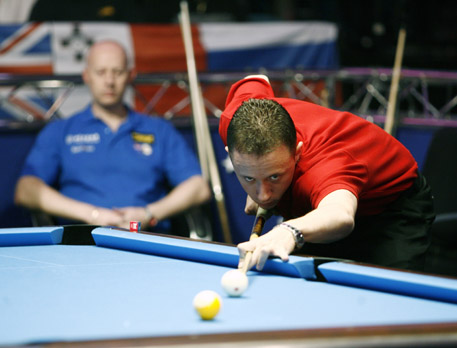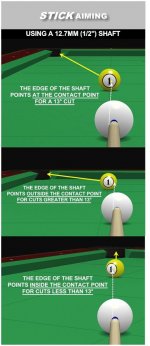What Pro Player uses the "ghost ball method?" I want to talk to them about something
The ghost ball method requires you to visualize the cue ball connected to the object ball....hmmm, this means that the "ghost ball" that you visualize will be slightly smaller as the object ball gets further away? And when the balls are closer you visualize the "ghost ball" as the same size as the cue ball, but since you are looking down at an angle it's what shape?
So the visualization is constantly changing depending on the distance from the object ball?
What could possible go wrong with that? When Shane Van Boening was ask what aiming system he used he simply said "I don't use the ghost ball," I wonder what he meant by that? One more question: What Pro Player uses the "ghost ball method?" I want to talk to them about something.

That is not a good way to estimate cut angle.
The ghost ball method requires you to visualize the cue ball connected to the object ball....hmmm, this means that the "ghost ball" that you visualize will be slightly smaller as the object ball gets further away? And when the balls are closer you visualize the "ghost ball" as the same size as the cue ball, but since you are looking down at an angle it's what shape?
So the visualization is constantly changing depending on the distance from the object ball?
What could possible go wrong with that? When Shane Van Boening was ask what aiming system he used he simply said "I don't use the ghost ball," I wonder what he meant by that? One more question: What Pro Player uses the "ghost ball method?" I want to talk to them about something.




